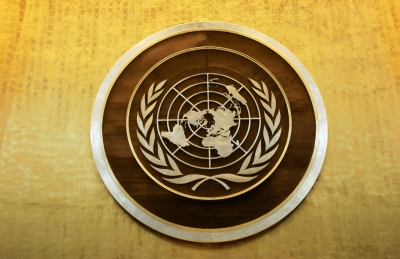Top News
Eco-labels, sustainability can be key to new markets: UN

New Delhi, Sep 17 (IANS) Eco-labels and voluntary sustainability standards that uphold not just the quality but also the sustainability of products from developing countries can be the key to unlocking new markets, a United Nations report said on Monday.
Ecolabelling is a voluntary method of environmental performance certification and labelling practised around the world. An ecolabel identifies products or services proven environmentally preferable overall, within a specific product or service category.
According to the United Nations Conference on Trade and Development (UNCTAD), the report was launched at the International Convention on Sustainable Trade and Standards here. The convention has been organised by the Quality Council of India (QCI) and the United Nations Forum on Sustainability Standards on September 17 ans 18.
“Today, there are almost 500 eco-labels in 199 countries and 25 industrial sectors,” UNCTAD Deputy Secretary General Isabelle Durant said in a statement.
“With broad uptake, standards can move industries towards improved social, environmental and economic performance. Standards translate the broad concept of sustainability into specific and concrete measures for companies and their suppliers and influence consumption decisions of the consumers,” she said.
The United Nations Forum on Sustainability Standards (UNFSS) is a knowledge-sharing and convening platform backed by UNCTAD, UN Food and Agriculture Organisation, International Trade Centre, United Nations Environment Programme and United Nations Industrial Development Organisation.
The platform is designed to analyse voluntary sustainability standards and disseminate information about them even as national multi-stakeholder platforms for VSS have been developed in different emerging economies.
India established the first national platform in 2016 with UNFSS support, with Brazil and China following suit.
“Currently, several other countries are also exploring the possibilities to develop their national platforms,” the statement said.
These platforms aid dialogue between public and private stakeholders on “how to pro-actively use VSS”, it added.
–IANS
bc/tsb/vm
Entertainment
Casino Days Reveal Internal Data on Most Popular Smartphones

International online casino Casino Days has published a report sharing their internal data on what types and brands of devices are used to play on the platform by users from the South Asian region.
Such aggregate data analyses allow the operator to optimise their website for the brands and models of devices people are actually using.
The insights gained through the research also help Casino Days tailor their services based on the better understanding of their clients and their needs.
Desktops and Tablets Lose the Battle vs Mobile
The primary data samples analysed by Casino Days reveal that mobile connections dominate the market in South Asia and are responsible for a whopping 96.6% of gaming sessions, while computers and tablets have negligible shares of 2.9% and 0.5% respectively.
The authors of the study point out that historically, playing online casino was exclusively done on computers, and attribute thе major shift to mobile that has unfolded over time to the wide spread of cheaper smartphones and mobile data plans in South Asia.
“Some of the reasons behind this massive difference in device type are affordability, technical advantages, as well as cheaper and more obtainable internet plans for mobiles than those for computers,” the researchers comment.
Xiaomi and Vivo Outperform Samsung, Apple Way Down in Rankings
Chinese brands Xiaomi and Vivo were used by 21.9% and 20.79% of Casino Days players from South Asia respectively, and together with the positioned in third place with a 18.1% share South Korean brand Samsung dominate the market among real money gamers in the region.
Cupertino, California-based Apple is way down in seventh with a user share of just 2.29%, overshadowed by Chinese brands Realme (11.43%), OPPO (11.23%), and OnePlus (4.07%).
Huawei is at the very bottom of the chart with a tiny share just below the single percent mark, trailing behind mobile devices by Motorola, Google, and Infinix.
The data on actual phone usage provided by Casino Days, even though limited to the gaming parts of the population of South Asia, paints a different picture from global statistics on smartphone shipments by vendors.
Apple and Samsung have been sharing the worldwide lead for over a decade, while current regional leader Xiaomi secured their third position globally just a couple of years ago.
Striking Android Dominance among South Asian Real Money Gaming Communities
The shifted market share patterns of the world’s top smartphone brands in South Asia observed by the Casino Days research paper reveal a striking dominance of Android devices at the expense of iOS-powered phones.
On the global level, Android enjoys a comfortable lead with a sizable 68.79% share which grows to nearly 79% when we look at the whole continent of Asia. The data on South Asian real money gaming communities suggests that Android’s dominance grows even higher and is north of the 90% mark.
Among the major factors behind these figures, the authors of the study point to the relative affordability of and greater availability of Android devices in the region, especially when manufactured locally in countries like India and Vietnam.
“And, with influencers and tech reviews putting emphasis on Android devices, the choice of mobile phone brand and OS becomes easy; Android has a much wider range of products and caters to the Asian online casino market in ways that Apple can’t due to technical limitations,” the researchers add.
The far better integration achieved by Google Pay compared to its counterpart Apple Pay has also played a crucial role in shaping the existing smartphone market trends.
Content provided by Adverloom













